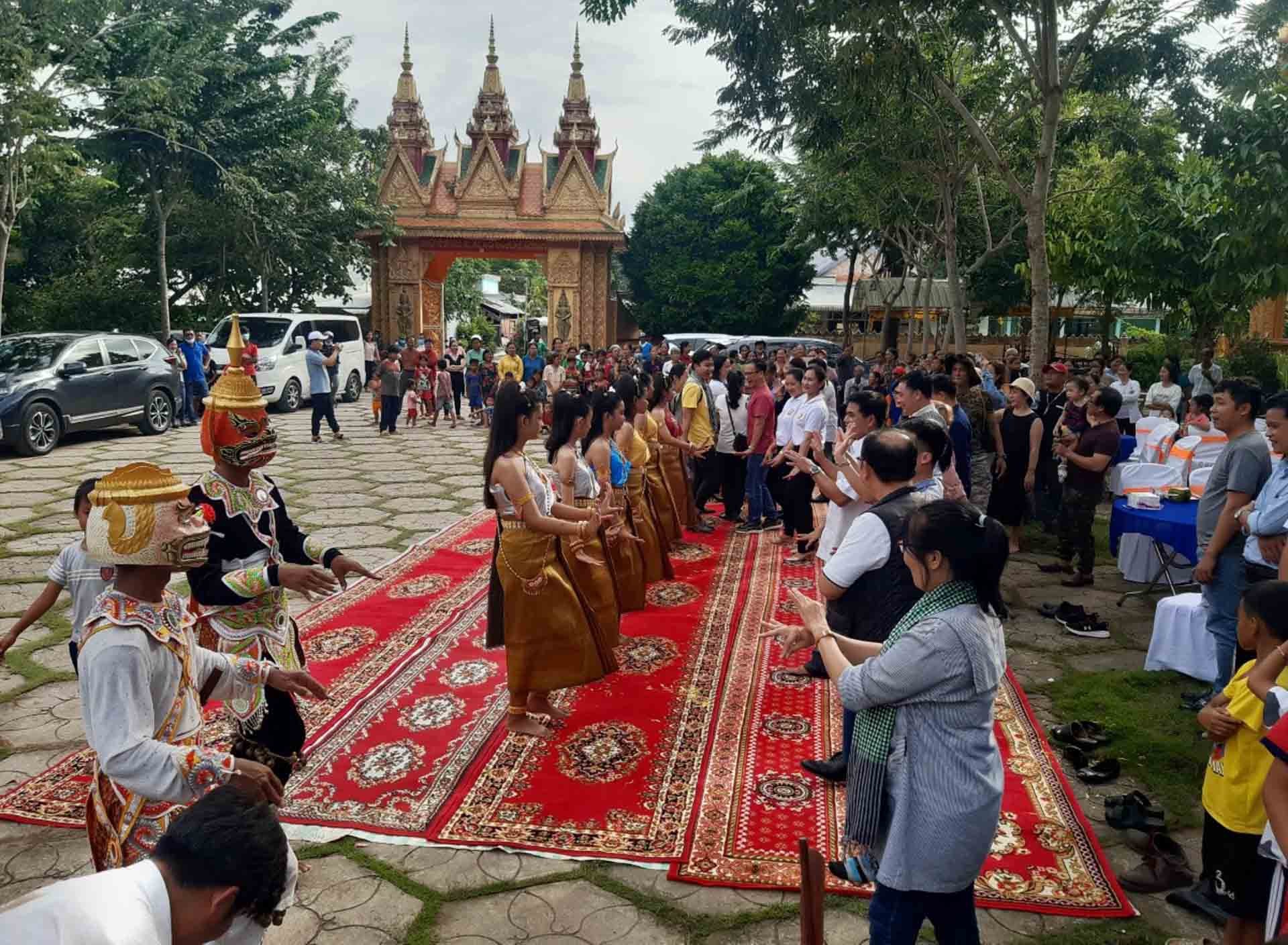
Tra Vinh taps potential of ethnic minority cultural identities associated with tourism development
Latest
In particular, the implementation of the National Target Program on socio-economic development of ethnic minority and mountainous regions in the 2021-2030 period, phase I from 2021-2025 (National Target Program 1719) has supported important resources and built motivation to the work of preserving and promoting traditional cultural values associated with tourism development.
 |
| Khmer Culture and Arts Club in Hoa An commune (Cau Ke district, Tra Vinh province) interacts with tourists during the 2023 Chol Chnam Thmay Festival. (Photo: Phuong Nghi) |
Exploit potential of ethnic minority cultural identities
Tra Vinh has a rich and diverse culture through religious festivals, art forms, and traditional professions, imbued with its unique cultural characteristics. Recently, the province has been aimed at the Khmer ethnic community to build a cultural life associated with elements of the nation's cultural identity, especially developing tourism products that promote domestic cultural identity.
The province has utilized the Khmer’s culture to attract tourists to experience and explore. Coming to Khmer Culture and Tourism Village, visitors can experience the relic complex of Ao Ba Om (Ba Om Pond), Ang Pagoda, and Museum of Khmer Ethnic Culture. They can also meet the Anh Binh Minh Khmer Art Association, enjoy performances of 5-tone musical ensemble, Chay Dam drum dance, and ethnic dances, as well as visit wood carving villages, learn how to make traditional masks with artisans, and enjoy Khmer ethnic specialties.
Among them, the scenic relic Ba Om Pond, listed as a national historical and cultural relic, is a tourist attraction. Surrounding the pond are undulating sand dunes and ancient trees, including more than 500 dipterocarpus alatus trees (cay dau) and hopea trees (cay sao). In particular, there are many trees with rough roots rising from the ground into strange shapes, which is a unique feature that cannot be found anywhere else.
The Khmer’s customs, practices, and festivals are closely associated with production life, family activities, community, and society; associated with morality, lifestyle, and human wishes in life. Khmer people in the province celebrate 11 traditional festivals annually, including three largest festivals: New Year celebration (Pithi Chol Chnam Thmay), Ancestor Worshiping Ceremony (Sen Dolta Festival), and Moon Worshiping Ceremony (Ok Om Bok Festival).
The province has diverse types of tourism, in particular, cultural tourism associated with spiritual tourism is a prominent feature, being distinguished with other provinces and cities in the Mekong Delta region.
 |
| Tra Vinh organizes a national costume performance contest celebrating Ok Om Bok Festival 2023. (Photo: Phuong Nghi) |
Promote cultural identity values
After more than 2 years of implementing Project 6 under the National Target Program 1719, the province has supported important resources and built motivation to the work of preserving and promoting traditional cultural values associated with tourism development.
Thach Mu Ni, Deputy Head of the provincial Committee for Ethnic Minority Affairs said that the province currently has 30 invested cultural and sports institutions; 1 intangible cultural work and 1 festival were restored and preserved; a traditional village serving tourism development; a traditional culture model was built, a folk culture activities club was established; a typical tourist destination in ethnic minority and mountainous areas was built. “In addition, there are 112 five-tone musical ensembles, 95 Cchay-dam drum teams, and other forms of art and sports, basically meeting the needs of enjoying culture and sports when coming to Tra Vinh”, he added,
At the same time, Khmer mass art festivals and national costume performances and competitions are also organized regularly. The Khmer Ethnic Culture Museum has collected, systematized, and displayed over 1.000 artifacts that clearly demonstrate the Khmer’s culture, productive labor, spiritual beliefs, and customs.
So far, the Khmer has 3 national intangible cultural heritages, including Cham Rieng- Cha Pay (the art of singing and playing Cha Pay, a two-stringed instrument), Ok Om Bok Festival, and Ro bam dance; 42 Khmer pagodas are recognized as provincial-level revolutionary historical relics and national historical and architectural cultural relics. Those pagodas always pay attention to maintaining ancient architecture, protecting and preserving typical cultural heritage.
Duong Hoang Sum, Director of the Provincial Department of Culture, Sports, and Tourism said: “The province always focus on preserving national cultural identity associated with tourism development, through implementing support policies, projects, and documents guiding investment and embellishing relics, making the relic a typical destination of Tra Vinh tourism”.
Not only effectively implementing ethnic policies, the work of preserving and promoting traditional cultural values of Tra Vinh is also associated with creating livelihoods for ethnic minorities through conservation projects associated with developing tourism, tourist services, and improving income sources for ethnic minorities.

















